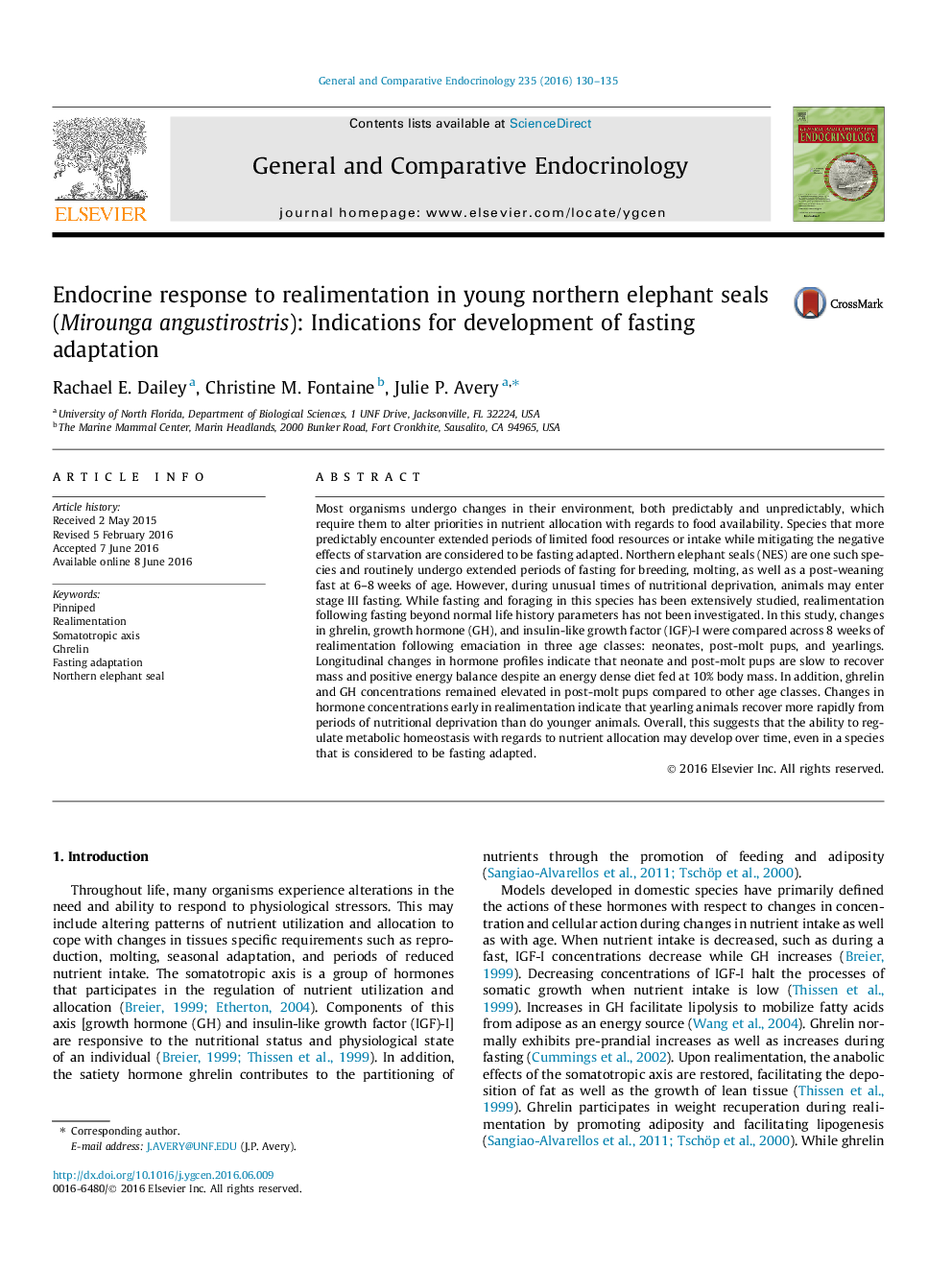| کد مقاله | کد نشریه | سال انتشار | مقاله انگلیسی | نسخه تمام متن |
|---|---|---|---|---|
| 2799769 | 1568872 | 2016 | 6 صفحه PDF | دانلود رایگان |
• Yearling seals recover more rapidly from nutritional nadir.
• There was no positive association of IGF-I and mass gain with realimentation.
• Ghrelin was greater in 4–8 wk old pups compared with neonates and yearlings.
Most organisms undergo changes in their environment, both predictably and unpredictably, which require them to alter priorities in nutrient allocation with regards to food availability. Species that more predictably encounter extended periods of limited food resources or intake while mitigating the negative effects of starvation are considered to be fasting adapted. Northern elephant seals (NES) are one such species and routinely undergo extended periods of fasting for breeding, molting, as well as a post-weaning fast at 6–8 weeks of age. However, during unusual times of nutritional deprivation, animals may enter stage III fasting. While fasting and foraging in this species has been extensively studied, realimentation following fasting beyond normal life history parameters has not been investigated. In this study, changes in ghrelin, growth hormone (GH), and insulin-like growth factor (IGF)-I were compared across 8 weeks of realimentation following emaciation in three age classes: neonates, post-molt pups, and yearlings. Longitudinal changes in hormone profiles indicate that neonate and post-molt pups are slow to recover mass and positive energy balance despite an energy dense diet fed at 10% body mass. In addition, ghrelin and GH concentrations remained elevated in post-molt pups compared to other age classes. Changes in hormone concentrations early in realimentation indicate that yearling animals recover more rapidly from periods of nutritional deprivation than do younger animals. Overall, this suggests that the ability to regulate metabolic homeostasis with regards to nutrient allocation may develop over time, even in a species that is considered to be fasting adapted.
Journal: General and Comparative Endocrinology - Volume 235, 1 September 2016, Pages 130–135
